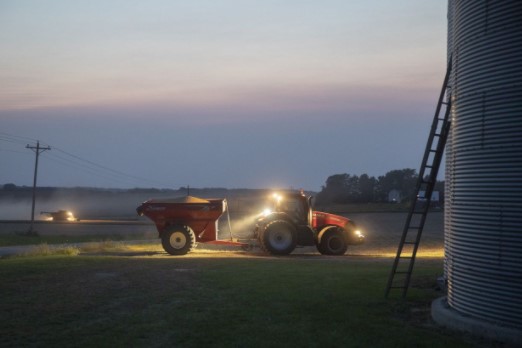By Jesse Newman

Soybeans are seeing a rise in price as dry weather and strong export demand drain U.S. stockpiles.
A crop glut that battered American farmers is subsiding, fueling an unexpected recovery in the U.S. Farm Belt following a yearslong agricultural recession.
Prices for corn, soybeans and wheat have soared to their highest levels in more than six years as dry weather and strong export demand from China drain U.S. stockpiles.
The rising commodity prices are rippling through the food chain, helping drive a sharp increase in U.S. farm income and lifting the prospects for a swath of rural businesses, from grain traders to equipment manufacturers and fertilizer suppliers.
At the same time, the revival in the grain sector is boosting costs and pressuring profit margins for producers of food and fuel that soak up vast quantities of U.S. corn and soybeans each year, and likely will drive increases in food prices for consumers, some food executives say.
Now, China’s push to increase pork production and fulfill recent trade commitments are propelling huge volumes of U.S. crops overseas. American food processors and manufacturers also are racing to ensure they have adequate grain and oilseed supplies to meet burgeoning consumer demand. Inventories of corn, soybeans and wheat are on track this season to hit their lowest in at least six years, according to U.S. Agriculture Department forecasts.
“There’s euphoria over [grain] prices,” said Illinois farmer David Brown, on a trip to his local grain elevator to sell soybeans. “There’s a feeling out there saying ‘game on, we’re back.’”
Large harvests or a slowdown in U.S. crop shipments to China could dampen the rally in grain markets, though industry analysts say rebuilding domestic stockpiles to comfortable levels could potentially keep prices high for up to two years.
Higher crop prices combined with record federal aid from the Trump administration pushed farmers’ incomes last year to their highest since 2013 even after the pandemic upended the U.S. farm sector, according to a USDA forecast. U.S. farm income will top $119 billion in 2020, the USDA said, the second-highest in nominal terms.
Farmers emboldened by the turnaround could sow crops this spring over the largest area since 2014, some agricultural economists and analysts say, planting corn and soybeans on millions of acres kept out of production by regional wet weather the past two seasons.
Businesses across the agricultural supply chain stand to benefit, as newly flush farmers who have delayed purchases spring for new tractors or higher-yielding seeds. The activity could boost profits for farm-equipment maker
Deere & Co. and seed and pesticide suppliers such as
Corteva Inc.
“Farmers are going to be bidding for farm ground, replacing combines and talking about ways to put another 10 bushels per acre into their bins,” said Michael Swanson, agricultural economist at Wells Fargo & Co., a major farm lender.
Stronger commodity markets already are pushing up farmland values, according to farmers, lenders and land managers. David Englund, chief executive of Farmers National Company, said the farm-management company last fall sold some parcels of land at
prices that neared those last seen in 2012, during the last farm boom.
A cornfield being plowed after harvest in Rosecrans.
Click here to see more...